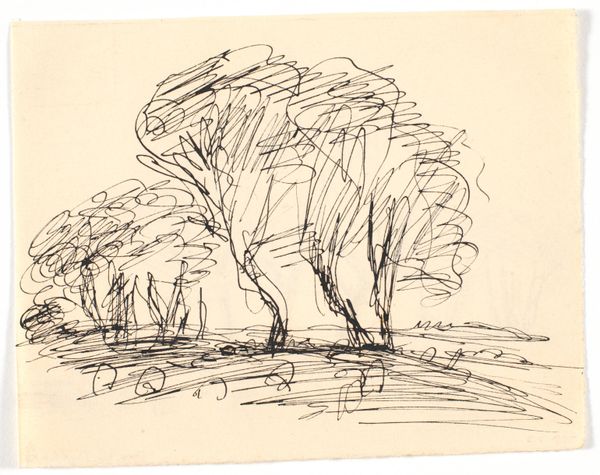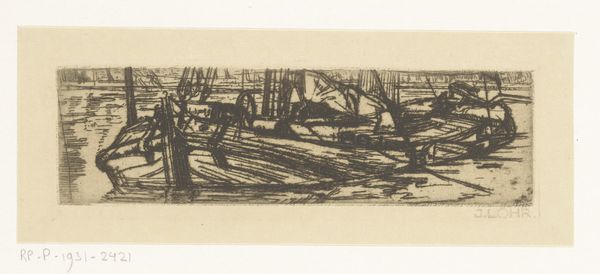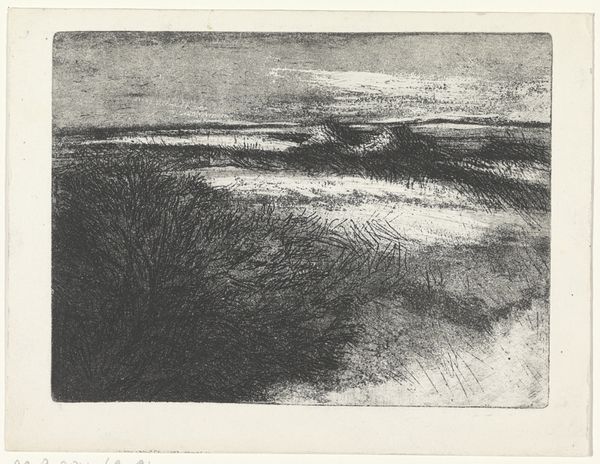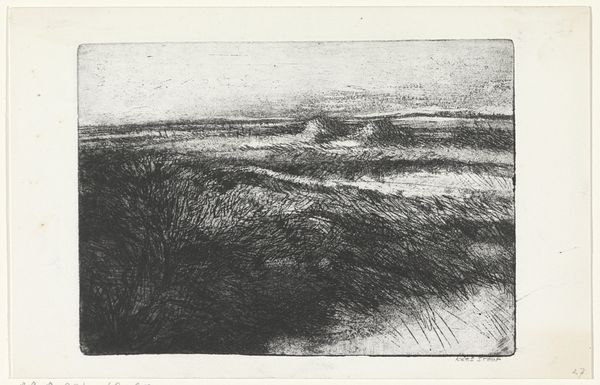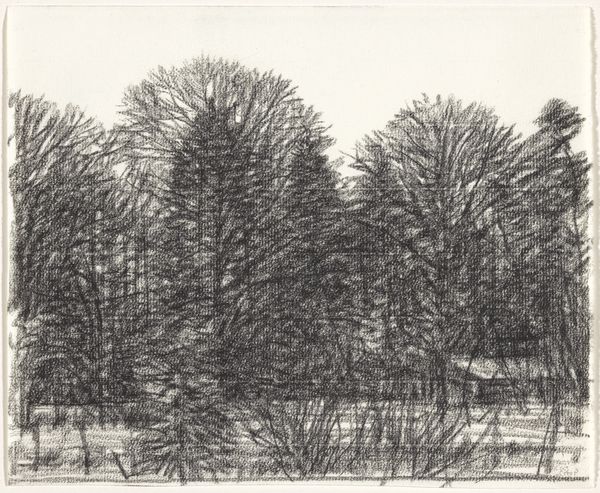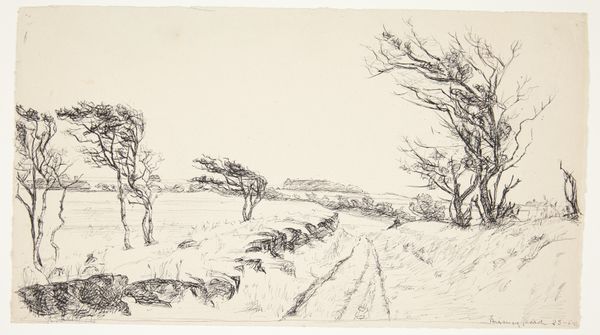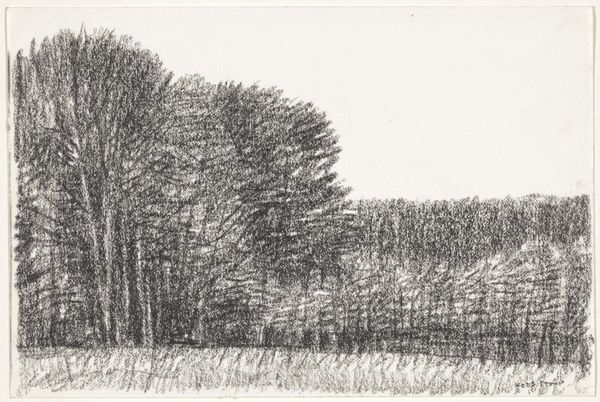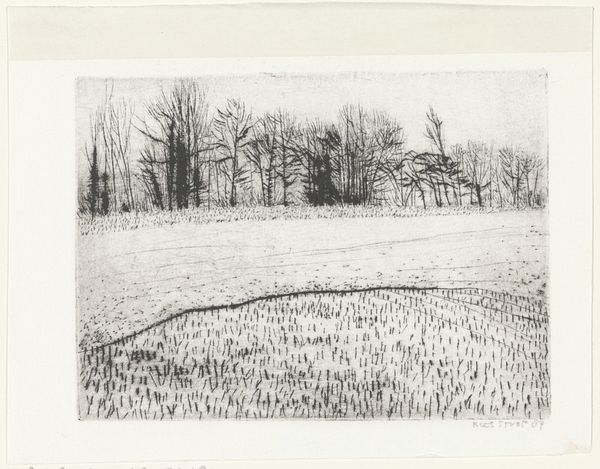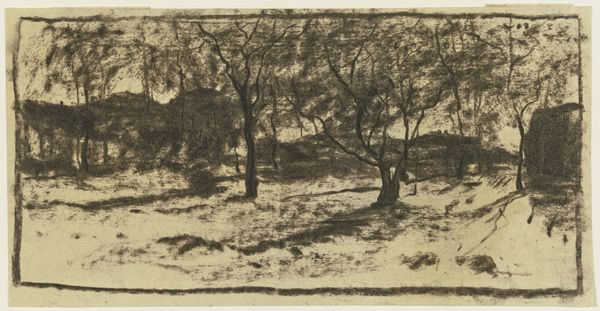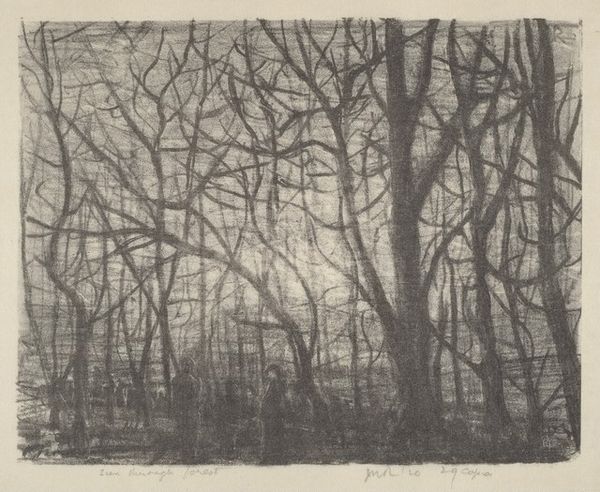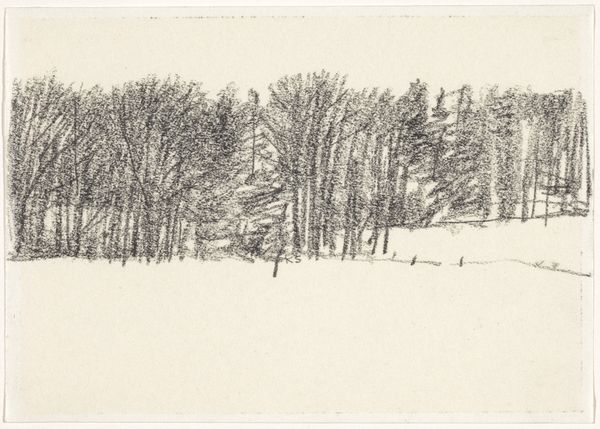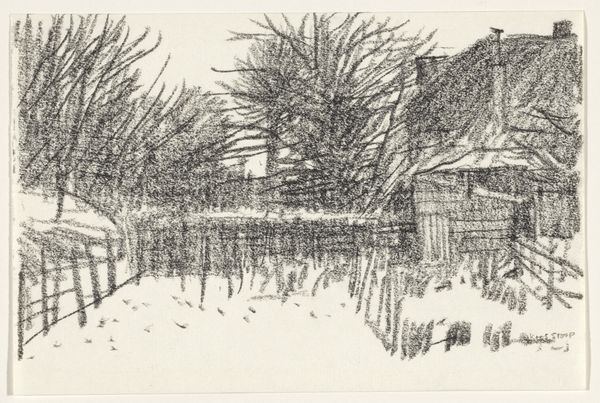
drawing, charcoal
#
drawing
#
landscape
#
form
#
charcoal
Dimensions: height 135 mm, width 209 mm
Copyright: Rijks Museum: Open Domain
Curator: Here we have Julie de Graag’s "Vier bomen op een rij," which roughly translates to “Four Trees in a Row.” It's a charcoal drawing, part of the Rijksmuseum's collection, dating somewhere between 1887 and 1924. Editor: A very subdued palette; somber even. The constrained composition adds to the quiet drama, presenting nature distilled down to its bare essentials. Curator: Absolutely. De Graag's masterful use of charcoal explores fundamental elements—shape, line, and value. The deliberate starkness invites reflection on how these forms structure the visual field. The row of trees establishes a clear, almost rhythmic progression across the picture plane, wouldn’t you agree? Editor: It is tempting to read more into these forms, though. In art of this period, landscapes became stand-ins for the upheavals of rapid industrialisation and the desire to reconnect with nature. One wonders how anxieties regarding urbanization and alienation may have crept into de Graag's artistic practice, regardless of how abstract she became. Curator: That’s quite insightful. Certainly, de Graag participated in exhibitions aimed at wider audiences. Her prints and drawings were showcased not just for aesthetic pleasure, but often within the context of craft fairs or design movements intending to reform modern life. However, I suggest her primary pursuit was the paring down of elements. Editor: Point taken, yet could this formal reduction itself represent a certain form of engagement, an effort to reveal some essential truth obscured by societal chaos? Perhaps not overt protest but quiet contemplation on nature and what mankind’s presence really represents. Curator: Fairly suggested; however, I remain convinced this speaks fundamentally to the composition itself. To perceive beauty or meaning embedded deep within austere forms, well, it offers possibilities irrespective of sociopolitical motivations of artist/viewer. Editor: Perhaps our interpretations mirror two distinct dimensions—form and cultural embeddedness – inherent in any work of art. Understanding the work comes when viewing them in unison. Curator: Well articulated and worth holding together.
Comments
No comments
Be the first to comment and join the conversation on the ultimate creative platform.
